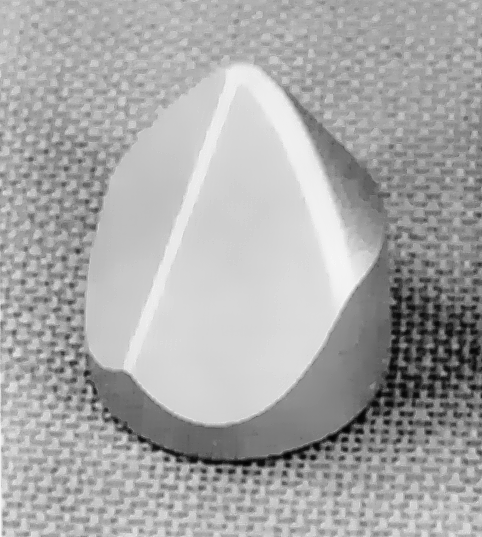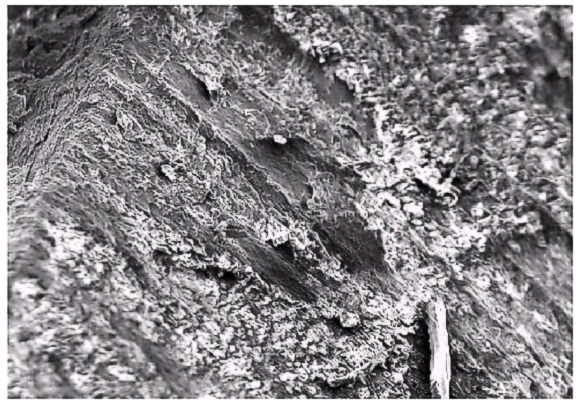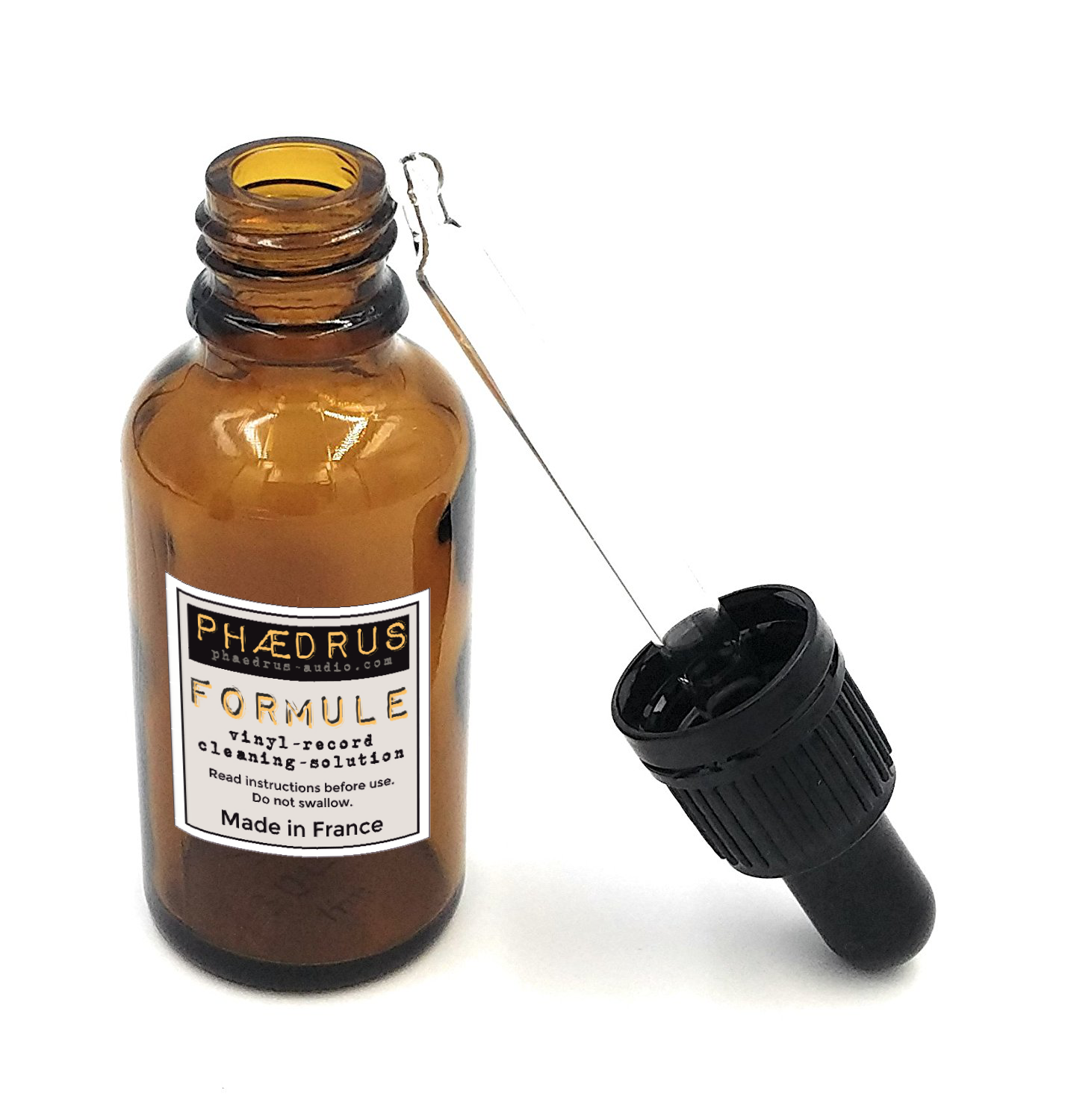


American sound engineer and inventor Lou Dorren told a story1 about how he accidentally discovered a technique for cleaning CD-4 records which, at the time, averted a potential commercial disaster which threatened to derail RCA and Warner Brothers from adopting JVC's CD-4 technology.
RCA had set a standard regarding accelerated life-testing of standard stereophonic discs and and expected the same results from quadraphonic discs. The standard was to play the test record 100 times with a conventional low-quality record player using a ceramic cartridge, tracking at 4.5g. After this "life-test", the record was expected to play faultlessly on a standard, high-quality setup.
Tests performed by both the Japanese and by RCA were indicating that quadraphonic records would only stand about 30 to 40 test-plays before the record became unacceptably distorted when replayed on good, quadraphonic equipment. At the time, this was a very serious issue.
According to Dorren, he tried normal cleaning methods and even resorted to a cleaning solution devised by a colleague especially for CD-4 discs. The results were the same, the records which had been played 100 times simply produced,
"..... nothing but horrible breakup noise, very little carrier, and no quadraphonic reproduction."
Dorren then recounts that he discovered by accident that, if the record was cleaned with his colleague's solution and played straightaway on a high-quality quadraphonic system with the volume down, the shape of the Shibata stylus would scrape the moistened grooves, leaving a dirtball around the stylus itself and rendering the grooves clean!
Dorren explains that he went on to examine discs treated in this way and compared them with other life-tested discs in a scanning electron micropscope. Here is his conclusion¹,

Because the wavelength of the 30 kHz sub-carriers is so short, it makes very rapid hills and valleys in the groove wall. As the stylus from the regular phono player plays this groove, it pushes the dirt into the valleys of the sub-carrier like a pavement steamroller. With each additional play, more dirt fills up the valleys until the dirt is as high as the peaks, essentially hiding the sub-carrier from the playback stylus (Figure [right]¹). When the disk is cleaned, the Shibata stylus, because of its shape in the front, acts like a snowplow and physically digs the dirt out of the valleys. This returns the groove to its normal condition, allowing it to play perfectly.
Whilst Dorren claimed that his contribution may have unblocked RCA's adoption of CD-4¹, it looks as if they may not have been completely convinced because the company continued to spend considerable time and investment in further consideration of the the problems of the wear of CD-4 records well after they had adopted the technology.
The results of the thorough RCA tests - and of the new plastic compound the company especially developed for CD-4 discs - is recorded in a JAES paper by Bogantz and Khanna². See CD-4 Records - Wear and Care.
 Whilst, we did not relish the idea of using an expensive cartridge with a Shibata stylus as a record-cleaning machine, we have experimented with Dorren's Shibata snow-plough technique and can confirm that it works on a few CD-4 discs.
Whilst, we did not relish the idea of using an expensive cartridge with a Shibata stylus as a record-cleaning machine, we have experimented with Dorren's Shibata snow-plough technique and can confirm that it works on a few CD-4 discs.
It doesn't seem as if Dorren ever revealed the recipe for his colleague's record cleaning solution. However, we have used Phædrus Audio's Formule. We think this is probably similar to Dorren's solution.
Experimental evidence of the technique is offered in the form of this oscillogram which shows the waveform of a CD-4 track pre- and post-cleaning using the snow-plough technique. The track is shown twice: the first half is pre-cleaning; the second part, post-cleaning. The difference is dramatic.
It's worth noting that this disc had been scrupulously cleaned (by conventional methods) from the start, so the waveform on the left was derived from what was thought to be a clean record.
Here is an audio demo. Here, the audio directly from the output of the FM discriminator pre- and post-cleaning are compared. (This is pre ANRS noise and distortion reduction, so, it offers the starkest contrast.) The first 30 seconds is the FM demodulation of the record prior to the Shibata snow-plough process, and the subsequent 30 seconds reveals the recovered signals post cleaning.
The difference is clear to hear.
Tests using Dorren's Shibata snow-plough technique reveal that some discs which - by normal standards - are cleaned (by hand, or in a machine), can remain begrimed by CD-4 standards. It may therefore remain a useful technique for enthusiasts of this medium³. However, Dorren's more ambitious claim that the technique, "......returns the groove [of a CD-4 disc well played with a heavy stylus] to its normal condition, allowing it to play perfectly" is almost certainly over optimistic and contradicts the conclusions of the RCA paper published in the AES Journal².
We should also alert those interested in this technique that there are critics of playing records when wet on the basis of Scanning Electron Microscope images of unique form of groove-damage which appears to be linked to the cooling effect of the cleaning liquid at the interface of the diamond stylus and the plastic groove4.
1. High Performance 2007 CD-4 Demodulator, Lou Dorren, Installment IV. Copyright 2008 Louis Dorren
2. Development of a Compound for QuadraDiscs, Bogantz G.A. and Khanna, K. JAES Jan/Feb 1975 (Originally given as a paper at the 49th AES Convention - September 1974)
3. We have not tried ultrasonic cleaning. The nature of the contamination (revealed in the image above) suggests that cavitation might be suitable for removing the "ingrained dirt" which Dorren claims beset these discs. We have received communication that this method is effective with CD-4 discs.
4. Role of Scanning Electron Beam Microscope in Disc Recording. Alexandrovich G. Presented at the 58th Convention of the AES November 1977.
 Pspatial Audio Home page
Pspatial Audio Home page
For all support issues, go here.
For Pspatial Audio sales, email: sales@pspatialaudio.com
